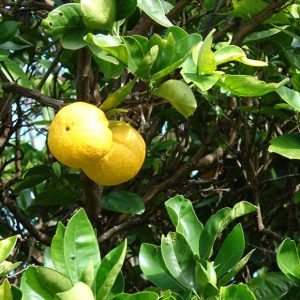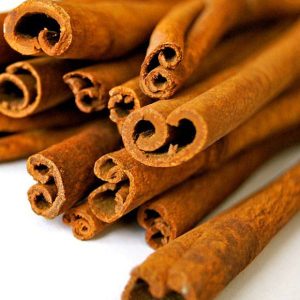- FREE SHIPPING IN CANADA ON ORDERS OF $100 OR MORE AT REGULAR PRICE. SOME EXCEPTIONS APPLY.
Shop
Essential oils
PATCHOULI, Pogostemon cablin
Price range: $8.13 through $96.47
Latin name: Pogostemon cablin
Distilled part: branches
Origin: Indonesia
Properties: anti-inflammatory, haemostatic, insect repellent, lymph tonic, phlebotonic, cell regenerating
Indications: skin wounds, mosquito repellent, cracked skin, eczema, anal fissures, hemorrhoids, psoriasis, wrinkles, varicose veins
Contraindications: None at physiological doses.
For more information: see the newsletter written by Maurice Nicole below
POGOSTEMON CABLIN (PATCHOULI), THE SCENT OF HIPPIES WITH MULTIPLE VIRTUES!
Patchouli is a tropical plant native to the Philippines and Indonesia. Its name comes from the Tamil patch = green, and Ilai = leaf, either in English “Patchleaf”, become patchouli.
It was used for a long time in Asia as a repellent against moths. In Malaysia, China and Japan it was known against snake bites and poisonous insect bites. In the Arab countries it was used to fight fevers and epidemics.
It was actually discovered only with modern perfumery, circa 1840, in the Philippines, by Western botanists. As it has remarkable properties fixing patchouli essential oil has quickly become an essential ingredient in fragrances and cosmetics: “Socking” of Shiaparelli, “Poison” by Yves St-Laurent, etc.
Distilling the flowering plant yields 2.5 to 3%. The leaves and flowering tops, once harvested, are dried and then lightly fermented before being distilled. The color of the essential oil is brownish yellow to greenish. Its strong and penetrating odor is very characteristic and leaves no one indifferent! Its composition is dominated by the presence of Sesquiterpenes and sesquiterpénols, including 30% patchoulol, heavy molecules that give it its thick and viscous consistency.
Studies have shown that patchoulol exhibits antiemetics (1), antispasmodic (2), and sedative (3) properties. Other studies have demonstrated its antifungal properties, especially against Candida albicans (4). The essential oil has a solid reputation as a phlébotonique, to treat the problems of varicose veins, hemorrhoids and venous congestion, and anti-inflammatory, especially at the level of dermatitis. It has also proven to be an excellent antibacterial against bacteria involved in skin conditions such as acne. Finally the research has confirmed its repellent power against moths.
On the psycho-energetic level, its aroma is musky, masculine, acrid, earthy, woody, potent and persistent. It has an oriental and sensual character reminiscent of both sandalwood and valerian or the vixen. It is all suitable for awakened dreamers who feel detached from physical reality and who are little interested in the carnal aspects of existence. In light diffusion or massage on the solar plexus, this HE will promote openness to the pleasures of life.
Properties
- Phlébotonique and Lymphotonique + + + +
- Astringent + + + +
- Skin Anti-inflammatory and tissue regenerating + + + +
- Antibacterial skin + + +
- Antifungal + + + +
- Repulsive against moths
- Antiemetic + + +
- Antispasmodic + + +
- Sedative + + +
Indications
- Varicose veins, hemorrhoids, venous congestion
- Eczema, Acne
- Sores, crevices
- Candidiasis, Vaginitis, onychomycosis, athlete’s foot
Application examples
HEMORRHOIDS
- Pogostemon Cablin 1 ml
- Mentha arvensis 1 ml
- Pelargonium x asperum 1ml
- Lantana Camara Davanonifera 1 ml
- Helichrysum italicum 1 ml
- St. John’s Wort Oil (Hypericum perforatum) 10 ml
- Calophylle Oil (Calophyllum inophyllum) 10 ml
dosage : Apply to the affected area 3 times/day or more often if necessary.
ATHLETE FEET
- Pogostemon Cablin 5 ml
- Cymbopogon martinii 5 ml
- Laurus nobilis 5 ml
dosage: apply to the affected area several times a day.
contraindications: none known
Bibliography:
- Yang Y, Kinoshita K, Koyama K et al (1999) Anti-emetic principles of Pogostemon Cablin(Blanco) Benth. Phytomedicine 6:89-93
- Ichikawa K, Kinoshita T, Sankawa U (1989) The screening of Chinese crude drugs for CA2 + antagonist activity: Identification of active principles from the aerial part of Pogostemon Cablin and The fruits of Prunus mume. Chemical & Pharmaceutical Bulletin 37:345-348
- Ito K, Ito M (2011) Sedative Effects of vapor inhalation of the essential oil ofMicrotoena Patchouli and its related compounds. Journal of Natural Medicine In Press
- Depo Yang, Danièle Michel, Danièle Mahajan, Harinome mian, Philippe Poitry, Jean-Pierre, Chaumont & Joëlle Millet-Clerc, Acta Botanica Gallica, Volume 143, Issue 1, 1996
This Hunzaroma newsletter was written by Maurice Nicole, ND. A., Institute of Scientific Aromatherapy, inaroma.ca




